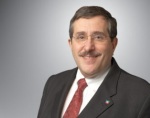Physician training beyond the clinical
February 11, 2020
by Sean Ruck, Contributing Editor
HealthCare Business News spoke with three leaders at Hartford HealthCare (HHC): Rocco Orlando, M.D., chief academic officer; Clara Riley, director of organization development, and Catie Santarsiero, APRN, director of provider health and wellness, about HHC's physician leadership training program.
About a decade ago, it became apparent that medical school and residency training weren’t preparing physicians sufficiently to work in complex organizations. “We were getting great clinicians, but not necessarily folks who understood organizational structure or organizational change and how to use it to improve care,” says Orlando.
Physicians might claim that administrators didn’t understand the clinical world — and, conversely, administrators might claim that clinicians didn’t understand business decision-making. Yes, those complaints probably will never go away entirely. But understanding the issues and encouraging teamwork are part of the solution at Hartford HealthCare. It starts with ensuring that the right people are at “at the table” to candidly address concerns and arrive at consensus.
A starting place is to gain an understanding of the pain points for the different people impacted by an issue. The ultimate goal, always, must be for all parties to ensure that decisions will provide the best experience and outcome for patients. Training helps create that bridge. To that end, the Provider Leadership Development Institute was started 10 years ago.
Here’s how it works
“We hold one full-day in class session on the first Wednesday of every month for nine months. In between, there’s project work. Providers are working on a very specific project that relates to our highest strategic goals in the organization. They’re working with a team and getting exposure in areas they otherwise might not have had contact with,” Santarsiero said. “They’re also getting the chance to use the skills, techniques, leadership competencies or knowledge shared from previous months so that they can practice it and give feedback to say what worked or didn’t work.”
The program is firmly rooted in HHC's culture, called “H3W”, How Hartford Healthcare Works, driven by 10 leadership behaviors. These include: “be in the moment,” “be curious rather than judgmental” and “have courageous conversations.”
Each month, the course starts with a senior leader focusing on the H3W leadership behaviors and asking participants to explain how they utilize those behaviors to engage their own team, create a safe culture and space, or empower their team to talk with their superiors, peers and subordinates.
“This creates a way to approach how we treat each other because H3W guides the way we act at HHC,” said Santarsiero.
One of the H3W components is to “be authentic and humanistic,” and Riley explains that this helps physicians understand the impact they have on others.
“We talk a lot in the program about understanding impact versus intent. That’s probably not something physicians learned in school or even in their own practices, but it’s a different way of thinking about how they act with individuals, whether peers or patients — how they’re coming across and how they’re being perceived.”
Training covers a wide spectrum, and the presenters’ specialties are diverse. For instance, Health IT is an important component, not treated as a silo.
“We bring that in through an innovation segment we offer,” says Orlando. “Our chief of clinical innovations also has a strong background in informatics. He brings that more as an example of case-based learning. In our organization, Health IT is not a silo, it’s part and parcel of the overall healthcare delivery system. When you think of what the future is, we have AI, big data — everything uses data to drive our decision-making and improve it.”
It took a great deal of fine-tuning to get the program to where it is today. For instance, Orlando said, it took years to get the group project work on track. In the program’s early days, participants would be asked to identify a problem and tackle it. Just the work needed to identify the problem would eat up a lot of time — and these are high-level people with full-time positions. Today, teams are created and then linked to an existing project the organization is working on. The team then takes on a component of the program while getting support from informatics, the project management office and other available resources.
“Now, participants receive a preselected project in need of a solution and they’re working on it with the resources they need to be successful,” said Orlando. “In year three of doing that, the shift has been very effective.”
The training is also a draw for new hires. “More and more physicians are interested during the recruitment process about what we do for leadership development. They want to know more,” Riley says. There’s also an unanticipated side benefit to the program: many of the skills covered in the training can be adapted to personal life as well. The group laughed when the question arose, but agreed that a number of clinicians had told them how lessons learned have helped them build better relationships with their significant other.
About a decade ago, it became apparent that medical school and residency training weren’t preparing physicians sufficiently to work in complex organizations. “We were getting great clinicians, but not necessarily folks who understood organizational structure or organizational change and how to use it to improve care,” says Orlando.
Physicians might claim that administrators didn’t understand the clinical world — and, conversely, administrators might claim that clinicians didn’t understand business decision-making. Yes, those complaints probably will never go away entirely. But understanding the issues and encouraging teamwork are part of the solution at Hartford HealthCare. It starts with ensuring that the right people are at “at the table” to candidly address concerns and arrive at consensus.
A starting place is to gain an understanding of the pain points for the different people impacted by an issue. The ultimate goal, always, must be for all parties to ensure that decisions will provide the best experience and outcome for patients. Training helps create that bridge. To that end, the Provider Leadership Development Institute was started 10 years ago.
Here’s how it works
“We hold one full-day in class session on the first Wednesday of every month for nine months. In between, there’s project work. Providers are working on a very specific project that relates to our highest strategic goals in the organization. They’re working with a team and getting exposure in areas they otherwise might not have had contact with,” Santarsiero said. “They’re also getting the chance to use the skills, techniques, leadership competencies or knowledge shared from previous months so that they can practice it and give feedback to say what worked or didn’t work.”
The program is firmly rooted in HHC's culture, called “H3W”, How Hartford Healthcare Works, driven by 10 leadership behaviors. These include: “be in the moment,” “be curious rather than judgmental” and “have courageous conversations.”
Each month, the course starts with a senior leader focusing on the H3W leadership behaviors and asking participants to explain how they utilize those behaviors to engage their own team, create a safe culture and space, or empower their team to talk with their superiors, peers and subordinates.
“This creates a way to approach how we treat each other because H3W guides the way we act at HHC,” said Santarsiero.
One of the H3W components is to “be authentic and humanistic,” and Riley explains that this helps physicians understand the impact they have on others.
“We talk a lot in the program about understanding impact versus intent. That’s probably not something physicians learned in school or even in their own practices, but it’s a different way of thinking about how they act with individuals, whether peers or patients — how they’re coming across and how they’re being perceived.”
Training covers a wide spectrum, and the presenters’ specialties are diverse. For instance, Health IT is an important component, not treated as a silo.
“We bring that in through an innovation segment we offer,” says Orlando. “Our chief of clinical innovations also has a strong background in informatics. He brings that more as an example of case-based learning. In our organization, Health IT is not a silo, it’s part and parcel of the overall healthcare delivery system. When you think of what the future is, we have AI, big data — everything uses data to drive our decision-making and improve it.”
It took a great deal of fine-tuning to get the program to where it is today. For instance, Orlando said, it took years to get the group project work on track. In the program’s early days, participants would be asked to identify a problem and tackle it. Just the work needed to identify the problem would eat up a lot of time — and these are high-level people with full-time positions. Today, teams are created and then linked to an existing project the organization is working on. The team then takes on a component of the program while getting support from informatics, the project management office and other available resources.
“Now, participants receive a preselected project in need of a solution and they’re working on it with the resources they need to be successful,” said Orlando. “In year three of doing that, the shift has been very effective.”
The training is also a draw for new hires. “More and more physicians are interested during the recruitment process about what we do for leadership development. They want to know more,” Riley says. There’s also an unanticipated side benefit to the program: many of the skills covered in the training can be adapted to personal life as well. The group laughed when the question arose, but agreed that a number of clinicians had told them how lessons learned have helped them build better relationships with their significant other.



